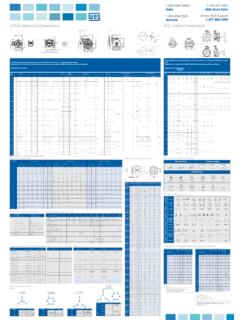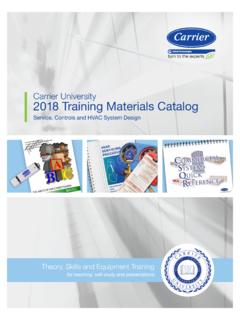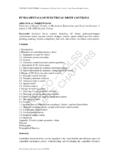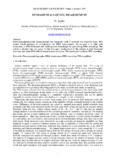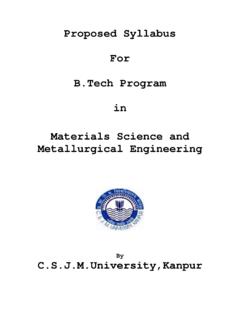Transcription of Motors - WEG
1 -- Motors | Automation | Energy | Transmission & Distribution | CoatingsMotors Specification of Electric MotorsSpecification of Electric Motors 2 Specification of Electric of Electric Motors 3 WEG, which began in 1961 as a small factory of electric Motors , has become a leading global supplier of electronic products for different segments. The search for excellence has resulted in the diversification of the business, adding to the electric Motors products which provide from power generation to more efficient means of diversification has been a solid foundation for the growth of the company which, for offering more complete solutions, currently serves its customers in a dedicated manner. Even after more than 50 years of history and continued growth, electric Motors remain one of WEG s main products.
2 Aligned with the market, WEG develops its portfolio of products always thinking about the special features of each application. In order to provide the basis for the success of WEG Motors , this simple and objective guide was created to help those who buy, sell and work with such equipment. It brings important information for the operation of various types of Motors . Enjoy your of Electric Motors 4 Table of Contents1. Fundamental Concepts .. Electric Motors .. Basic Concepts ..71. To r q u e .. Mechanical Energy & Power .. Electrical Energy & Power .. Apparent, Active and Reactive Power .. Power Factor .. Efficiency .. Torque Versus Power Ratio .. Single-Phase AC Systems .. Connection: Parallel and Series .. Star Connection.
3 Three-Phase AC System .. Delta Connection .. Three-Phase Induction motor .. Working Principle - Rotating Field .. Synchronous Speed ( ns ) .. Slip ( s ).. Rated Speed .. Insulation Materials and Insulation Systems .. Insulation Material .. Insulation System .. Thermal Classes .. Insulating Materials in Insulation Systems .. WEG Insulation System ..162. Power Supply Characteristics .. Power Supply System .. Three-Phase System .. Single-Phase System ..183. Characteristics of the Electric motor Power Rated Voltage .. Multiple Rated Voltage .. Rated Frequency ( Hz ) .. Connection to Different Frequencies .. Voltage and Frequency Variation Tolerance .. Three-Phase motor Starting Current Limitation .. Starting .. Starting with Star-Delta Switch ( Y - ).
4 Compensating Switch .. Comparing Star-Delta Starters and .. Series-Parallel Starting .. Electronic Start ( Soft-Starter ) .. Direction of Rotation of Three-Phase Induction Motors ..254. Acceleration Characteristics .. To r q u e .. Torque X Speed Curve .. Designs - Minimum Standardized Torque Values .. Characteristics of WEG Motors .. Load Inertia .. Acceleration Time .. Duty Locked Rotor Current .. Standardized Maximum Values ..295. Speed Regulation of Asynchronous Motors .. Changing the Number of Poles .. Two Speed Motors with Independent Windings .. Dahlander .. Motors with Two or More Speeds .. Slip Variation .. Rotor Resistance Variation .. Stator Voltage Variation .. Frequency Inverters.
5 316. Brake motor .. Brake Operation .. Connection Diagram .. Brake Coil Power Supply .. Brake Torque .. Air Gap Adjustment ..337. Operating Characteristics .. Winding Heating Up .. motor Lifetime .. Insulation Classes .. Winding Temperature Rise Measurement .. Electric motor Application ..36 Thermal Protection of Electric Motors .. Resistance Temperature Detector ( Pt-100 ).. Thermistors ( PTC and NTC ) .. Bimetal Thermal Protectors - Thermostats .. Phenolic Thermal Protection System .. Service Duty .. Standardized Service Duties .. Duty Type Designation .. Rated Output .. Equivalent Power Ratings for Low Inertia Loads .. Service Factor ( SF ) ..448. Environment Characteristics.
6 Altitude .. Ambient Temperature .. Determining Useful motor Output at Different Temperature and Altitude Conditions .. Environment .. Aggressive Environments .. Environments Containing Dusts and Fibers .. Explosive Atmospheres .. Degree of Protection .. Identification Codes .. Usual Degrees of Protection .. Weather Protected Motors .. Space Heater .. Noise Levels .. of Electric Motors 5--9. Explosive Atmosphere .. Hazardous Explosive Atmosphere .. Classification of Hazardous Areas .. Classes and Groups of the Hazardous Areas .. Protection by Enclosure .. Temperature Classes .. Equipment for Explosive Atmospheres .. Increased Safety Equipment.
7 Explosion-Proof Equipment ..5110. Mounting Arrangements .. Dimensions .. Standardized Type of Construction and Mounting Arrangement .. Painting .. Tropicalized Painting ..5411. Three-Phase Electric motor Selection and Application .. motor Type Selection for Different Loads .. WMagnet Drive System .. Application of Induction Motors with Variable Frequency Drives .. Normative Aspects .. Induction Machine Speed Variation by Frequency Inverter .. Characteristics of the Frequency Inverter .. Control Types .. Harmonics .. Inverter Influencing motor Performance ..6012. Environmental Packaging .. Test s .. Variable Frequency Drive Motors .
8 6314. Appendix .. International System of Units .. Unit Convertion .. Standards .. of Electric Motors 6 SPLIT-PHASESTART CAPACITORASYNCHRONOUSSQUIRREL CASESINGLE PHASETHREE PHASEAC MOTORDC MOTORSERIE EXCITATIONINDEPENDENT EXCITATIONCOMPOUND EXCITATIONPERMANENT MAGNETPARALLEL EXCITATIONPERMANENT CAPACITORSHADED POLESTWO-VALUE CAPACITORREPULSIONWOUND ROTORSYNCHRONOUSASYNCHRONOUSSYNCHRONOUSL INEARUNIVERSALMANUFACTURED BY WEGRELUCTANCEPERMANENT MAGNETINDUCTIONPERMANENT MAGNETSQUIRREL CASEWOUND ROTORPEMANENT MAGNETNON-SALIENT POLERELUCTANCESALIENT Electric MotorsThe electric motor is a machine capable of converting electrical energy into mechanical energy. The induction motor is the most widely used type of motor , because it combines all the advantages offered by the electrical energy such as low cost, easy of supply and distribution, clean handling and simple controls - together with those of simple construction and its great versatility to be adapted to wide ranges of loads and improved efficiencies.
9 The most common types of electric Motors are:a ) Direct current motorsThese Motors are quite expensive requiring a direct current source or a converting device to convert normal alternating current into direct current. They are capable of operating with adjustable speeds over a wide range and are perfectly suited for accurate and flexible speed control. Therefore, their use is restricted to special applications where these requirements compensate the much higher installation and maintenance costs. b ) Alternating current Motors These are the most frequently used Motors because electrical power is normally supplied as alternating current. The most common types are:Synchronous Motors : synchronous Motors are three-phase AC Motors which run at fixed speed, without slip, and are generally applied for large outputs ( due to their relatively high costs in smaller frame sizes ).
10 Induction motor : these Motors generally run at a constant speed which changes slightly when mechanical loads are applied to the motor shaft. Due to its simplicity, robustness and low cost, this type of motor is the most widely used and, in practical terms, is quite suitable for almost all types of machines. Currently it is possible to control the speed of induction Motors by frequency Universe of Electric MotorsTable Fundamental ConceptsThis Classification Diagram shows the most widely used types of Motors . Motors for specific use and with reduced application are not shown of Electric Motors Basic ConceptsFor better understanding of the following sections we will now review some principles of Physics concerning energy and TorqueTorque, also known as moment of force, is the measure of energy required to rotate a shaft.


